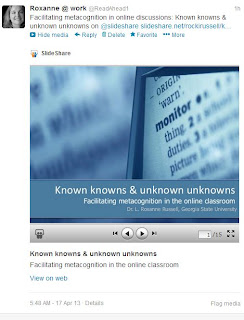I have embraced the social media sharing world with gusto. And without their consent, this means my kids have, too. Not only will they have a digital scrapbook of almost every single day of their young lives, but also most of the waking hours, through my social media accounts.
As the first generation to experience this degree of public broadcast, will they resent it? Will they continue to crave it? Am I making a big parenting mistake?
The discussion I see around this topic of putting our kids on social media mostly covers safety. The argument goes that our pics are easily traced to specific locations, so we are inviting kidnappers to find our kids remotely. I'm less concerned with this aspect of my constant posting. For one, instances of kidnapping by strangers are extremely rare, like tiny percentages rare. Also, I only broadcast my kids to my Friends, whom I choose carefully based on actual personal relationships. Perhaps in the case of future data mining I will wish not quite so much were known about my life and theirs- but I am taking this risk.
The benefits I imagine around my over-sharing include:
As the first generation to experience this degree of public broadcast, will they resent it? Will they continue to crave it? Am I making a big parenting mistake?
The discussion I see around this topic of putting our kids on social media mostly covers safety. The argument goes that our pics are easily traced to specific locations, so we are inviting kidnappers to find our kids remotely. I'm less concerned with this aspect of my constant posting. For one, instances of kidnapping by strangers are extremely rare, like tiny percentages rare. Also, I only broadcast my kids to my Friends, whom I choose carefully based on actual personal relationships. Perhaps in the case of future data mining I will wish not quite so much were known about my life and theirs- but I am taking this risk.
The benefits I imagine around my over-sharing include:
- a larger network of people who seem to genuinely care about the well being of my children since they know them as more than glamshots on a Christmas card once a year
- a resource for advice about rearing my kids- not to mention the cautionary tales
- a controlled "post it on the refrigerator" audience for my kids' creative endeavors and accomplishments- my 8 yr old loves to see what people say when I post about her
- the aspiration to greatness that comes from having an audience- It's been shown again and again that we act "more nobly" when we feel we're being watched. Giving testimonials is a central part of many behavior modification treatments- see AA.
- the chance to find a like-minded community- this is a biggie for me on Facebook. I have made many brand new friends, through old community networks, because of social media. I see what they like, what they post, what they value, and I pursue relationships with them because they suit my family's ethos. It's been a chance to be more selective than just same school, same recreational activities, in building the community around my children.
- a public digital history my children may never escape
- a heightened self-consciousness that leads to either insecurity or too much dependence on external approval
- exhausting my audience of our family trivia- familiarity breeds contempt
I've used this post to sort out my thoughts on this because I already know my decision through my own actions- I'll keep relentlessly posting. And I will try to remain reflective about it. I will continue to seek my kids' opinions on it and cease and desist on their behalf at their request. Digital exposure will be a persistently ill-defined problem in their lives, so why not start working on it now?





























